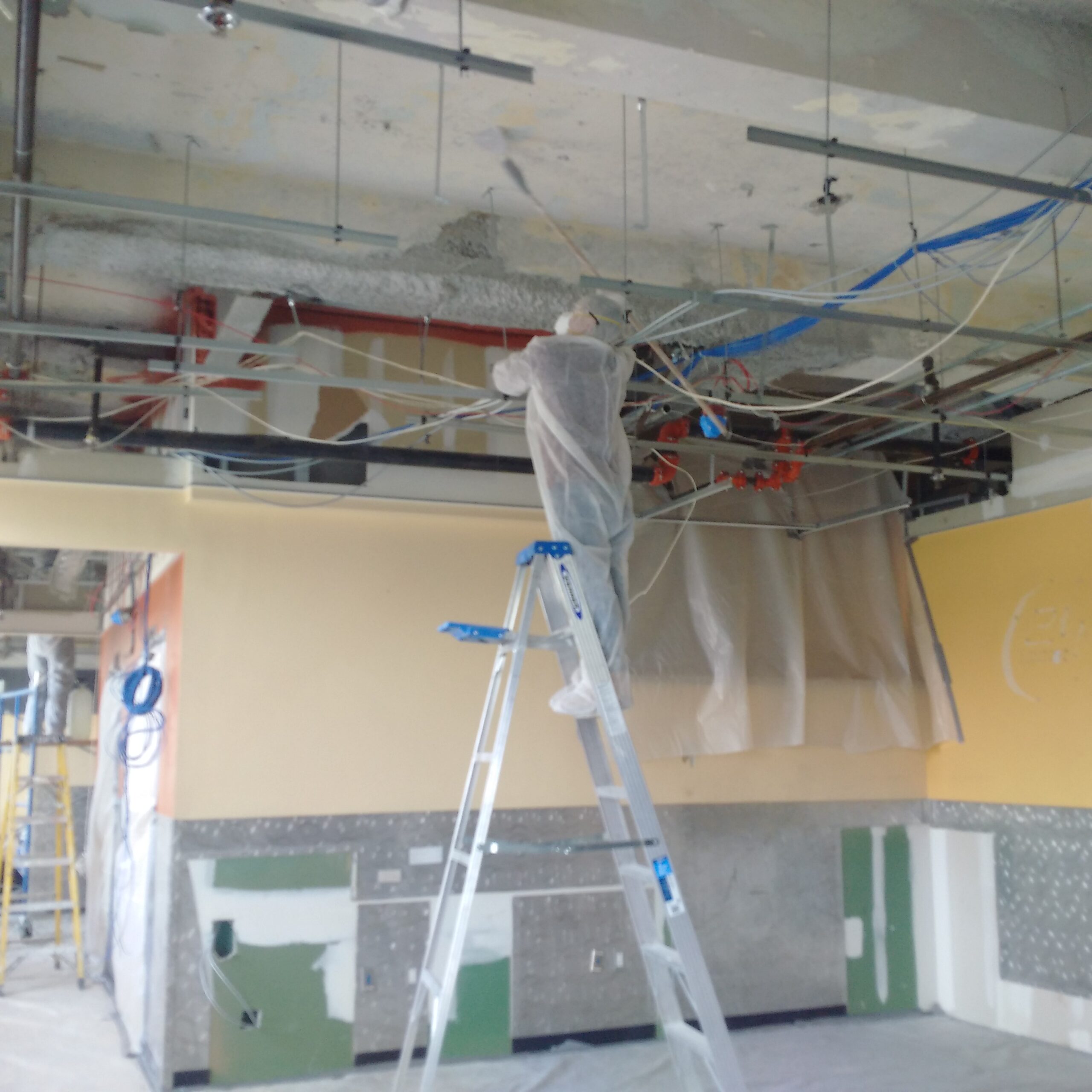Comprehensive Lead Paint Removal Service in NYC-- Licensed and Licensed
Comprehensive Lead Paint Removal Service in NYC-- Licensed and Licensed
Blog Article
Comprehensive Overview on Effective Lead Offense Elimination Strategies
In the world of environmental safety, resolving lead infractions requires a precise and structured strategy. This detailed overview begins by highlighting the critical initial actions of identifying lead dangers with advanced assessment and screening methods. Strategies such as XRF evaluation and dust wipe tasting are crucial in pinpointing contamination sources. In addition, the guide clarifies on the significance of adhering to strict safety methods during the removal procedure, consisting of the use of appropriate PPE and isolating impacted locations (Lead Paint Removal Company). The subsequent areas promise to review post-removal verification and precautionary techniques, guaranteeing long-term safety and security and conformity. Discover the intricate details that make these techniques not just reliable but vital.
Identifying Lead Risks
Determining lead hazards is an important first action in mitigating the threats connected with lead direct exposure. Lead, a hazardous metal, can be present in various environmental mediums, consisting of paint, soil, water, and dust. It presents serious wellness threats, particularly to kids and expecting females, causing neurological damages and developing delays. Precise identification of possible lead sources is crucial for effective remediation.
The initial phase in recognizing lead threats involves comprehending usual lead sources within the constructed setting. Structures constructed prior to 1978 are particularly vulnerable as a result of the prevalent use lead-based paint during that duration. Additionally, soil contamination can occur from degrading exterior paint, commercial exhausts, or historic use of leaded gas.
An additional substantial resource is lead piping and plumbing fixtures, which can seep lead right into drinking water. Durable goods such as playthings, porcelains, and imported products might also include harmful lead degrees. Significantly, work atmospheres and hobbies entailing lead can track impurities into homes.
Assessment and Testing
When resolving lead hazards, reliable assessment and screening are paramount. This critical step guarantees the identification and quantification of lead visibility, thus assisting subsequent removal initiatives. Preliminary assessment generally entails an aesthetic inspection to determine possible lead resources, such as weakening paint or polluted dust. This is matched by more rigorous screening methods to determine the level of contamination.

Dirt clean tasting is an additional crucial method, particularly in residential setups. By collecting examples from floorings, windowsills, and various other surfaces, this method gives insights into prospective direct exposure dangers. Additionally, our website soil testing around structure borders is vital to spot lead contamination that could posture hazards, especially to children.
Safe Removal Treatments
Upon finishing comprehensive analysis and testing, executing secure removal treatments is the following critical phase in attending to lead hazards. This process makes sure that lead-contaminated materials are effectively and safely removed, reducing threat to both employees and citizens. The primary step includes isolating the afflicted location using plastic bed linen and correct sealing methods to stop the spread of lead dust.
Workers must wear proper personal protective devices (PPE), consisting of respirators, gloves, and disposable coveralls, to reduce exposure. Utilizing specialized devices and wet methods, such as wet fining sand or making use of HEPA-filtered vacuums, decreases the dispersion of lead particles. It is important to stay clear of completely dry sanding or rough blowing up, as these methods can create harmful lead dirt.
Waste disposal is one more crucial component; all polluted products must be firmly gotten and identified according to EPA and neighborhood regulations. Additionally, thorough cleaning of the workspace with HEPA vacuums and damp cleaning makes certain the elimination of recurring lead particles.
Post-Removal Verification

Verification of successful lead removal, recognized as post-removal verification, is useful content necessary to make certain the security and habitability of the remediated area. This process involves a collection of careful analyses and tests designed to detect any type of residual lead fragments that might pose health risks. The first step typically includes a visual assessment to assess the completion and top quality of the remediation work. This evaluation makes sure that all well-known resources of lead have actually been resolved and that no noticeable indications of contamination continue to be.
Adhering to the visual inspection, environmental sampling is carried out. This includes collecting dirt, dirt, and sometimes water samples from the remediated area. Certified laboratories examine these samples to measure lead levels, guaranteeing they fall below the safety limits developed by regulatory bodies such as the Environmental Security Firm (EPA)
In addition, air quality testing may be performed to identify air-borne lead particles, particularly in instances where extensive lead-based paint elimination or renovation has taken place. The outcomes of these tests provide measurable data validating that the lead degrees are within allowable limits.
Eventually, post-removal confirmation acts as a crucial checkpoint, verifying the performance of the lead reduction efforts and safeguarding the health and wellness of owners and site visitors.
Precautionary Measures and Upkeep

A crucial safety net consists of the use of lead-safe accredited contractors for any type of remodelling, fixing, or painting activities. These specialists are learnt practices that minimize lead dust and particles. Furthermore, keeping colored surface areas to avoid damaging or peeling is essential, as deteriorating paint can release lead particles into the atmosphere.
Educational initiatives targeting building owners and occupants pertaining to the dangers of lead and the relevance of reporting any type of potential hazards can additionally enhance preventive initiatives. Routine cleansing making use of HEPA vacuum cleaners and damp mopping strategies can dramatically decrease lead dust buildup.
Final Thought
In summary, reliable lead violation removal necessitates a precise approach including extensive assessment, exact screening, and strict elimination treatments. Ongoing examinations and maintenance are necessary to alleviate future lead hazards, therefore securing public wellness and guaranteeing sustained conformity with regulatory needs.
Report this page